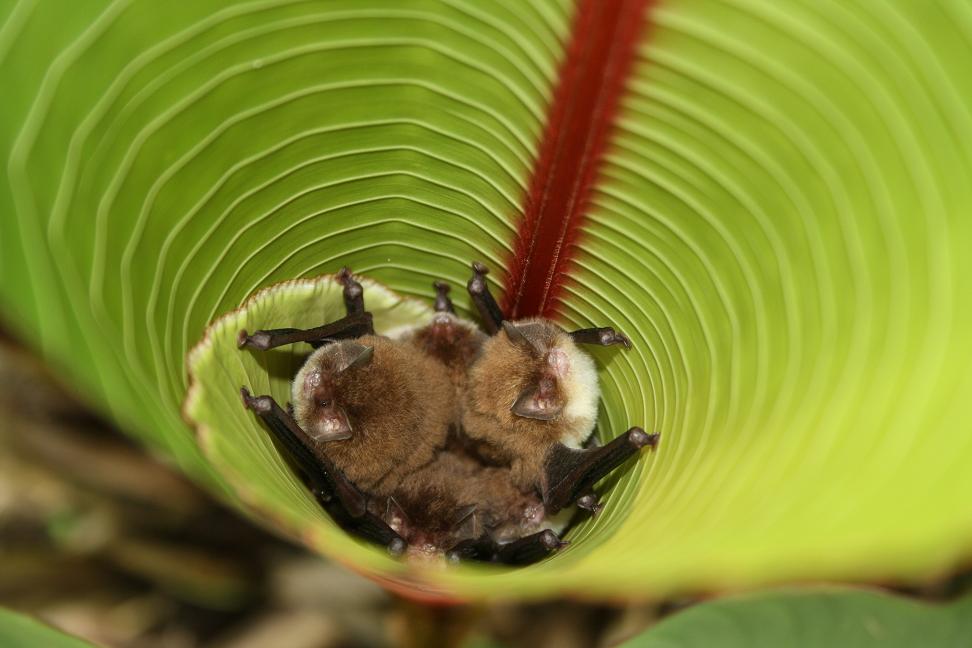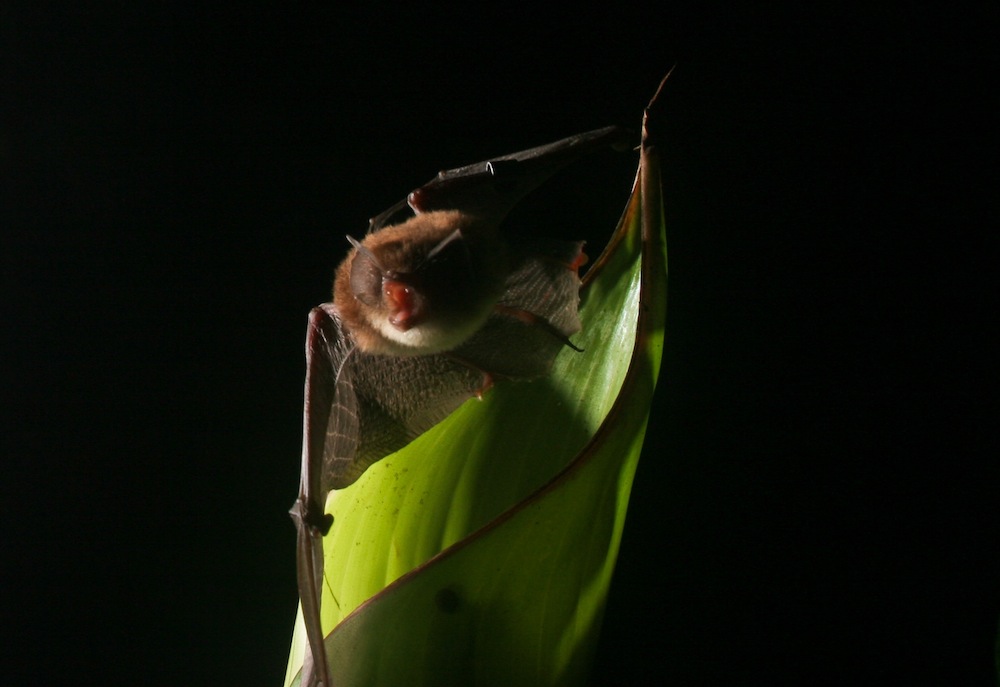Gallery: Leaf-Living Bats
Roosting Bats

Spix's disc-winged bats roost in an unfurling leaf in the rainforest of Costa Rica.
Bat Teeth

Spix's disc-winged bats form groups of five or six, staying together for years despite their itinerate lifestyles.
Spix's Disc-Winged Bat

A new study of Spix's disc-winged bats finds that their tubular roosts also serve as hearing aids, amplifying the cries of flying bats so those in the roost can hear them better.
Bat Exits a Roost

A Spix's disc-winged bat takes flight from its roost.
Spix's Disc-Winged Bat in Flight

This Spix's disc-winged bat will find another roost after a night of hunting.
Bat in Flight

Disc-winged bats are named for the suction-cup like structures on their wings and feet, which allow them to cling to the smooth surfaces of their leaf roosts.
Get the world’s most fascinating discoveries delivered straight to your inbox.

Stephanie Pappas is a contributing writer for Live Science, covering topics ranging from geoscience to archaeology to the human brain and behavior. She was previously a senior writer for Live Science but is now a freelancer based in Denver, Colorado, and regularly contributes to Scientific American and The Monitor, the monthly magazine of the American Psychological Association. Stephanie received a bachelor's degree in psychology from the University of South Carolina and a graduate certificate in science communication from the University of California, Santa Cruz.
